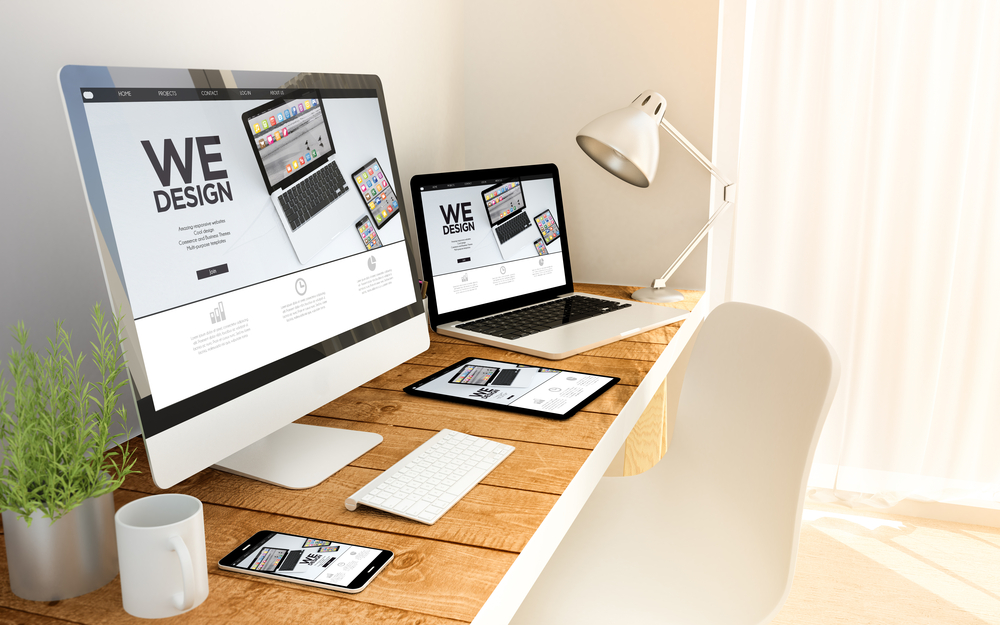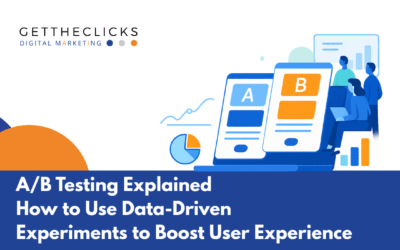Most people click onto a website, find the information they need in about five minutes, and then click away. The whole point of having a good website design is to make your website memorable in that short time—and to entice your website visitors to stay longer.
This is all a part of your online marketing strategy, but people tend to make mistakes with website design. The best web design Tampa services will help you avoid these common web design mistakes but in case you want to educate yourself about them, here is a list that you can take note of.
11 Web Design Mistakes People Make
Lack of Clarity
Confusion and a lack of clarity is one of the biggest web design mistakes by web designers.. When people visit your website, you want them to understand right away what your business is about and why they should stay. If they’re in any way confused about what your website is meant to do and what your company does, your visitors will leave.
You need to make sure that your website makes everything completely clear, with easy-to-understand text, organization, and everything in clear view—like testimonials, awards, and so on.
Navigation
Speaking of clarity, your website needs to be designed in a way that makes it easy to navigate. You want to make it so that your users are able to find information quickly and easily because if they’re confused about what to click on to find what they need, they’ll click away.
Have someone test out the navigation on your page to ensure that the average person can find menus and that you have all the pages laid out clearly.
If you notice some problems with your existing navigation, one of the best ways to correct this is to outline your navigation, your menu, and check to see that visitors can always get back to your home page in a pinch. It never hurts to check on all of your links to make sure they all work too.
Too Much Going On
Some websites try to fill every inch of available space with content. While large and complex websites might seem like a good idea, having all of that space filled is only confusing to your users.
You don’t want too many photos or too much text crowding up your page because people will be overwhelmed and won’t stick around in an overcrowded space.
Get rid of elements on your webpage that you don’t need, and organize your information so that it makes sense. It’s perfectly alright to have some white space on your page—this is actually a really smart idea to have some white space instead of trying to fill every inch.
Call to Action
This is something you’ve seen on a website before. It’s usually something along the lines of “click here to buy” or “input your email here,” and while this may seem simple, having a good call to action actually serves an important purpose.
A call to action will help your site visitors understand what they should be doing, whether that means inputting their email or buying your product.
Make sure that you put these instructions somewhere that people can see too. You don’t want them to be hidden somewhere that people can’t find. You need to have something simple but clear to give people an indication of what they should do.
Mobile Phones
Lack of mobile responsiveness is one of the top web design mistakes too. With so many people using their mobile phones to browse websites these days, you have to make sure that you have a responsive web design.
When people have websites that don’t work for phones, it’s likely that your users will not return to your site. With so many websites out there as your competition, people will just move on to another website if yours isn’t working or displaying properly on their phone.
Color Choice
Wrong colors are one of the biggest web design mistakes too. The colors on your website is one of the first thing that people notice.
If you have a color scheme that hurts peoples’ eyes or that ends up being overwhelming, people will be more likely to click away.
Your colors have a huge influence on your brand identity too, so you want to be careful with making your choices.
Try limiting your colors if you’re having trouble, and use the colors that you have used to build your brand.
Content
Your content does indeed matter. You can’t just have random information on your website, and you should make sure that you avoid having too much description and copy that you don’t need.
Be straightforward about the information you’re including and read your content to ensure that the grammar and spelling is correct. There’s nothing that looks more unprofessional than obviously misspelled words.
Text Blocks
Speaking of content, make sure that you don’t have a huge wall of text. People are generally intimidated by huge pieces of text and won’t take the time to read a paragraph that spans an entire page.
Make any content you have scannable with text breaks, bullet points, and headings that split up your information.
Website Loading
People are impatient. If it takes too long for your website to load, people will click away quickly.
People tend to click away after 3 seconds if your website doesn’t load, and if you are noticing that it’s taking a while for your content to show up, this might be directly related to your content. If you have too many elements on your web page, it will slow it down.
Fonts
Not only do you have to consider the actual font that you’re using, but you have to think about the color and the size.
Use a font that people can read and that will match your existing color scheme. Don’t use more than three fonts either; you need to remain consistent in your design throughout instead of trying to add more flavor just for the fun of it.
Difficult Clicking
On phones especially, it can become problematic for web designs to have links so small that they’re difficult to click. Or it might end up being irritating for people to click on something and get taken to a new webpage.
Importance of Web Design
If your website has the information and the infrastructure, why does the design matter? You might be spending money on everything else, and don’t want to redesign all your web pages. But the truth is, there is a lot of value that comes from good design.
Your Audience
The whole point of having good web design is to appeal to your audience and to make a good first impression on the people that you want buying your product or engaging with your business.
Your information or product might be important and relevant, but people have a tendency to judge based on first impressions—because we all react to visuals. And if your web design isn’t all that great, people are not likely to stick around.
Did you know that around 75% of people judge a company’s credibility based on the visual design? This applies to your website too. If people see a website that looks unappealing or just simply outdated, your audience will doubt you.
That’s why you have to make a better impression with web design, to entice people to stay. People tend to form a first impression in about a second, after all, and you want that first impression to be a good one.
Over time, you might lose some of your audience too if they don’t like the look and navigation of your website.
SEO Strategy: Ranking on Search Engines
Search engine optimization should already be a part of your online marketing strategy, and it should already be something that you’ve adjusted your website content for.
Your design also impacts your SEO, and will make it more likely for search engines to show your website with the right keywords.
This is a little more complicated, but basically, web design elements need to be SEO friendly so that it’s more likely that your website will be ranked well.
The best way to understand this and to get your website SEO friendly is to talk to a web design company, since they will know exactly what the best design practices are.
Customer Service
Beyond appealing to your audience, the look of your website will also set an impression for customer service. Having a good website design gives people the idea that you will take care of them as your customers.
The idea here is that: if you take care of your website, you’ll be more likely to put the same effort into helping your customers.
Think of your website as part of your customer service. You want to attract people with a bright, modern, and inviting page that makes people feel like they’re taken care of.
Alternatively, if your website is old and an outdated contact page, your customers might end up wondering if you’re even still in business.
Compete
Beyond appealing to your audience and boosting the search rankings of your website, one of the biggest reasons why you should fix up your design is because your competitors are doing it—and you’ll want to compete with them.
To remain relevant and to genuinely draw customers away from competitors, it’s important to update your design.
Set your business apart from the competition so that you stand out from everyone else and you create consistency with your brand. It’s easy enough to build yourself up with something as simple as your design.
Effects of Poor Web Design
There’s good design and there’s bad design. What happens if you have bad design and make common web design mistakes? What exactly is bad design in the first place?
Clutter
One of the most common web design mistakes is clutter. Websites that are designed poorly are difficult to engage with.
Think about whether you’ve seen clutter on a website that has too many animations, too many auto-play videos, and bad organization that doesn’t make it easy for people to navigate everything.
If your website is cluttered, people will be more likely to leave early on. This is especially true if you have so much going on that images aren’t able to load.
People won’t stick around if the website doesn’t appear to be working. Not to mention that people will think that your website is untrustworthy and unprofessional if there’s too much going on.
Formatting and Content
Here’s another one of the most common web design mistakes that might feel like an obvious one. If your content has issues, people will be unlikely to stay on your website. Your content needs to feel up to date too.
If you have a company blog that you’re not updating, it will make people wonder whether you’re still running your business and how involved you are.
Of course, anything that you post needs to be relevant. You don’t want to blog something just to have some content that’s not related to your actual company.
Fill any blog with useful information about your industry, and make sure that any content that you do post is formatted correctly.
While you may want to boost your SEO rankings, it doesn’t help to have random keywords spread around. Fluff text won’t inspire your customers to trust your brand either.
Usability For Website Visitors
In the end, your users need to be able to actually use your website. This means that they should be able to navigate your content with ease.
Websites that make it difficult to find the information will lose customers, because people don’t have the time or patience to go through every tab in your website to try and find what they need.
You need to incorporate your design and formatting together so that people don’t become frustrated trying to navigate and engage with your website.
Conclusion
There’s no question about it: good web design is crucial and you need to avoid common web design mistakes. This is all part of your web strategy. If you have a web design that’s too cluttered or hard to make sense of, you’ll lose customers and visitors. With some simple fixes, you can make your web design that much more appealing and effective. Make an effort to avoid these web design mistakes at all cost.





